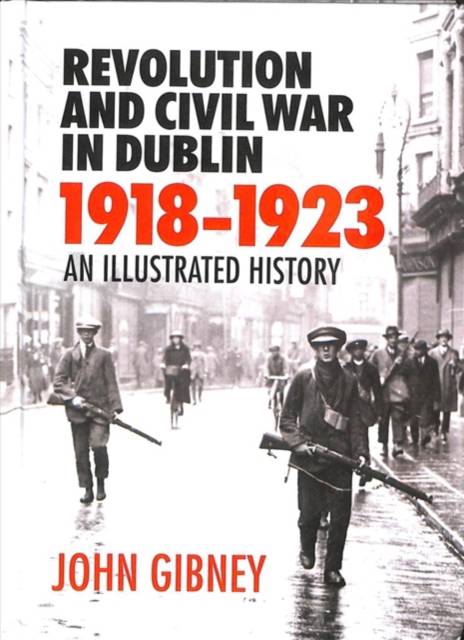
- Afhalen na 1 uur in een winkel met voorraad
- Gratis thuislevering in België vanaf € 30
- Ruim aanbod met 7 miljoen producten
- Afhalen na 1 uur in een winkel met voorraad
- Gratis thuislevering in België vanaf € 30
- Ruim aanbod met 7 miljoen producten
Zoeken
€ 34,95
+ 69 punten
Omschrijving
Dublin was one of the cockpits of the Irish revolution, and was the setting for some of the most iconic events of that era. But while images of the Easter Rising have become familiar, especially since its centenary, the same cannot be said of what came after.
John Gibney's study makes use of a wide variety of contemporary documents and images, some of which have never been seen before, to explore the second half of the Irish revolution in Ireland's capital city. Beginning in the pivotal year of 1918, it chronicles events such as the conscription crisis, the First World War, the Spanish Flu pandemic, Home Rule, the first Dáil, the War of Independence, the Truce, the Treaty debates and the Civil War. All are vividly illuminated by the images assembled here. Alongside the photos and documents relating to political life and conflict are those that reveal other aspects of life in Dublin in this period: poverty, wealth, charity, leisure, sport, entertainment, public health, women's rights and the struggles of the labour movement.
Lavishly illustrated, this book opens a unique window into the realities of life in Ireland's capital city from the end of the First World War to the aftermath of the Irish Civil War.
John Gibney's study makes use of a wide variety of contemporary documents and images, some of which have never been seen before, to explore the second half of the Irish revolution in Ireland's capital city. Beginning in the pivotal year of 1918, it chronicles events such as the conscription crisis, the First World War, the Spanish Flu pandemic, Home Rule, the first Dáil, the War of Independence, the Truce, the Treaty debates and the Civil War. All are vividly illuminated by the images assembled here. Alongside the photos and documents relating to political life and conflict are those that reveal other aspects of life in Dublin in this period: poverty, wealth, charity, leisure, sport, entertainment, public health, women's rights and the struggles of the labour movement.
Lavishly illustrated, this book opens a unique window into the realities of life in Ireland's capital city from the end of the First World War to the aftermath of the Irish Civil War.
Specificaties
Betrokkenen
- Auteur(s):
- Uitgeverij:
Inhoud
- Aantal bladzijden:
- 232
- Taal:
- Engels
Eigenschappen
- Productcode (EAN):
- 9781848893559
- Verschijningsdatum:
- 12/10/2018
- Uitvoering:
- Hardcover
- Formaat:
- Genaaid
- Afmetingen:
- 178 mm x 246 mm
- Gewicht:
- 838 g

Alleen bij Standaard Boekhandel
+ 69 punten op je klantenkaart van Standaard Boekhandel
Beoordelingen
We publiceren alleen reviews die voldoen aan de voorwaarden voor reviews. Bekijk onze voorwaarden voor reviews.











